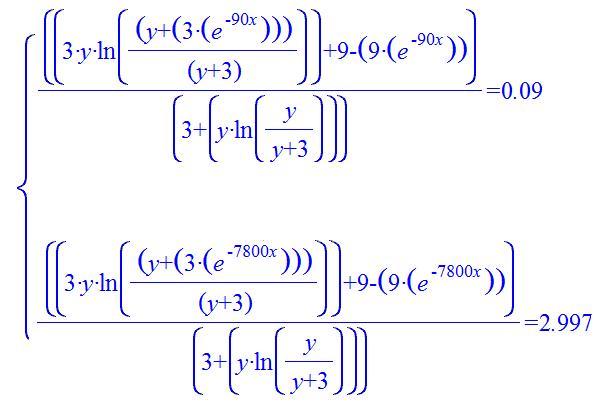There are real solutions?
 Can and be real numbers? Does this system have solutions?
Chemical reaction S+E=SE=P+E
Can and be real numbers? Does this system have solutions?
Chemical reaction S+E=SE=P+E
No vote yet
1 vote
 Can and be real numbers? Does this system have solutions?
Chemical reaction S+E=SE=P+E
Can and be real numbers? Does this system have solutions?
Chemical reaction S+E=SE=P+E
Easy Math Editor
This discussion board is a place to discuss our Daily Challenges and the math and science related to those challenges. Explanations are more than just a solution — they should explain the steps and thinking strategies that you used to obtain the solution. Comments should further the discussion of math and science.
When posting on Brilliant:
*italics*or_italics_**bold**or__bold__paragraph 1
paragraph 2
[example link](https://brilliant.org)> This is a quote# I indented these lines # 4 spaces, and now they show # up as a code block. print "hello world"\(...\)or\[...\]to ensure proper formatting.2 \times 32^{34}a_{i-1}\frac{2}{3}\sqrt{2}\sum_{i=1}^3\sin \theta\boxed{123}Comments
Woah. What were you trying to solve?
Log in to reply
Modelling an enzimatic reaction :)
Log in to reply
Using? A variation of Michelis-Menten?
Log in to reply
Yes =) stating the rate of conversion x in different way :)
Log in to reply
Haha woah cool! I knew it would be that :P
What about approximations? If you assume some concentrations/rate constants are much larger than others, then you can neglect many terms. But I'm sure you've thought about this already.
Log in to reply
this is already the reducted model :) but the two therms can't be calculated so easy by my pc xD
Log in to reply
Are x and y concentrations?
If so, then there must be some real solution, right? (as we're modelling a real-world chemical reaction.)
Log in to reply
0<y<1 and 0<x<0.1; y is a constant;x is the inverse of a time =)
Log in to reply
Ah okay, now I'm seeing the problem. I can't really help you much more though - have you tried Mathematica Online?
Log in to reply
Not yet,I don't know the website :)
Log in to reply
Oh sure, here it is. There's a fifteen day free trial, which should be enough for your computations.
Log in to reply
Thank you =)